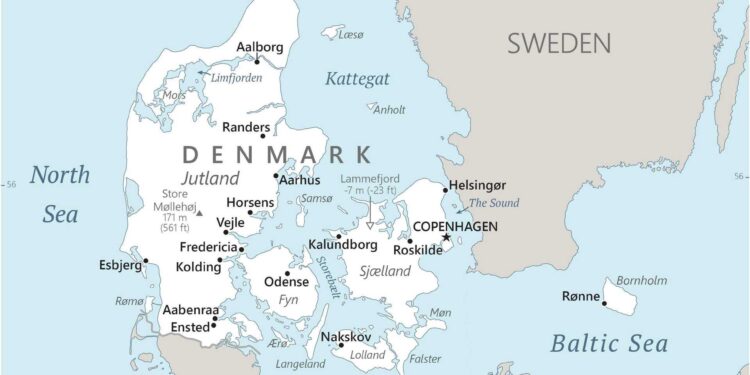Denmark stands as a prominent example of a modern welfare state, blending Scandinavian social ideals with active participation in the European Union. Known for its comprehensive social safety nets, high living standards, and commitment to equality, Denmark’s model continues to draw global attention and analysis. As part of the Scandinavian region and a longstanding EU member, the country navigates the complexities of maintaining robust welfare programs while adapting to broader European economic and political frameworks. This article explores Denmark’s unique approach to welfare, its role within Scandinavia, and its position in the EU, drawing on insights from Britannica’s extensive coverage.
Denmark’s Welfare Model Explored Insights into Universal Healthcare and Social Security
Denmark’s universal healthcare system stands as a cornerstone of its welfare state, emphasizing accessibility, equity, and comprehensive coverage. Funded primarily through taxes, healthcare services are free at the point of use, ensuring citizens receive timely medical attention regardless of income. This model supports a wide network of public hospitals, general practitioners, and specialized care, all coordinated to minimize disparities across regions. Preventative medicine and early intervention are prioritized, contributing to Denmark’s high life expectancy and low infant mortality rates.
The social security framework complements health services by guaranteeing economic stability and social protection through various schemes. Citizens benefit from
- unemployment benefits, providing financial support during job transitions
- pension schemes ensuring dignified retirement
- family allowances facilitating work-life balance
- disability and sickness benefits, covering income loss when unable to work
The system is underpinned by a strong sense of trust and social cohesion, with high tax compliance rates that enable sustained funding. Below is a snapshot illustrating key welfare expenditures as a percentage of GDP, highlighting Denmark’s commitment to social welfare compared to the European average:
| Category | Denmark (%) | EU Average (%) |
|---|---|---|
| Healthcare Spending | 10.4 | 7.8 |
| Social Protection | 29.7 | 23.4 |
| Unemployment Benefits | 2.0 | 1.2 |
| Family Benefits | 2.5 | 1.8 |
Navigating Scandinavian Identity The Role of Cultural Values in Shaping Public Policy
Scandinavian countries, notably Denmark, showcase a distinct blend of cultural values that deeply influence their approach to governance. These nations prioritize principles such as equality, community welfare, and individual responsibility. It is this cultural fabric that shapes comprehensive public policies aimed at fostering social cohesion and robust welfare systems. The interplay between collective societal trust and government accountability forms the backbone of their policy models. Through this lens, legislation often reflects a balance between safeguarding universal rights and encouraging active citizen participation in societal development.
Policy frameworks in Denmark frequently emphasize transparency, inclusiveness, and sustainability, aligning with core Scandinavian ideals. The welfare state is not merely a social safety net but a manifestation of shared cultural commitments. Key policy areas such as healthcare, education, and labor markets are designed to address societal needs holistically, while also adapting to global influences like EU integration. The table below outlines some prominent Scandinavian values and their direct implications on Danish public policy:
| Scandinavian Value | Policy Implication |
|---|---|
| Equality | Universal healthcare and education access |
| Collectivism | Robust welfare benefits and social security |
| Transparency | Open government data and accountability measures |
| Sustainability | Environmental regulations and green infrastructure |
| Individual Responsibility | Active labor market policies and lifelong learning |
Denmark in the European Union Challenges and Opportunities for Continued Integration
Denmark’s relationship with the European Union remains a complex balance of sovereignty and collaboration. While the nation benefits from the EU’s single market and political influence, it also fiercely guards its welfare model and social policies. Issues such as immigration, fiscal contributions, and regulatory alignments spark continuous debate among Danish policymakers and citizens alike. The Danish opt-outs on the euro and defense policies illustrate the desire to maintain certain national controls, underscoring the challenge of harmonizing EU integration with deep-rooted domestic priorities.
The evolving EU landscape presents both hurdles and promising prospects for Denmark’s continued integration. Key areas in focus include:
- Economic coordination: Ensuring robust growth while preserving Denmark’s high social standards.
- Environmental leadership: Leveraging Denmark’s pioneering green energy policies within EU frameworks.
- Security cooperation: Navigating the tension between national defense independence and collective EU security initiatives.
| Opportunity | Challenge |
|---|---|
| Access to a large, integrated market | Maintaining control over immigration policies |
| Influence in EU climate legislation | Reluctance to join the eurozone |
| Strengthened diplomatic ties | Navigating sovereignty concerns in defense cooperation |
To Wrap It Up
In summary, Denmark’s status as a leading welfare state continues to shape its social, economic, and political landscape, reflecting core Scandinavian values of equity and collective responsibility. As a member of the European Union, Denmark navigates the balance between national welfare priorities and broader EU policies, maintaining its distinctive approach while engaging in regional cooperation. Understanding Denmark’s model offers valuable insights into the complexities and achievements of modern welfare states in Europe today.
















